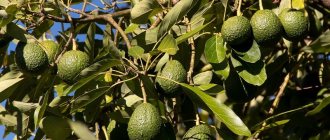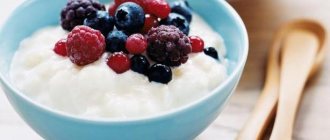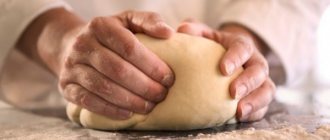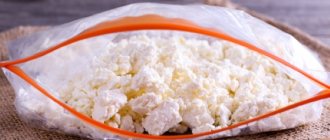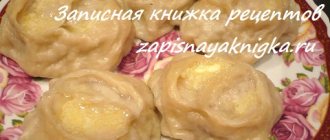Why is nectar not candied?
Sugaring of honey does not always occur. Honey in a glass jar has been standing for a long time, but still retains a liquid consistency? It means that:
- It contains a large amount of water - 17% or more. Sometimes beekeepers deliberately dilute nectar with water because they know that customers like the liquid product better. Will it be candied or not in principle? Of course, it will just happen much slower.
- The product contains little or no pollen.
- The nectar was collected ahead of time - it does not contain a number of substances that are also responsible for crystallization. Unripe honey may eventually ferment rather than thicken. Have you seen a foaming product? It was collected earlier than necessary.
- You constantly stir the nectar - regular stirring delays the crystallization process. This does not mean that it will never thicken - it just won’t happen soon.
- At low temperatures, the crystallization process stops. In this case, it is better to melt crystallizing honey than to freeze it and thereby deprive it of a number of beneficial properties.
What kind of honey is never candied? The one that contains syrups and other additives that melt the crystals.
Does sugaring affect properties and shelf life?
You should know that the product will not lose its benefits after crystallization .
Honey will be as healing as fresh honey. You don't need to hold it for a long time. The fresher the product, the healthier it is. The process will not affect the standard shelf life. The harder it is, the less likely it is to disappear. The crystallized product will be significantly less contaminated. At the same time, its quality is almost not affected by light and oxygen. Interesting fact : if the honey is stone, then it is allowed to break it off and eat it in pieces.
For storage, the product is wrapped in cloth and placed in a dark and cool place. What kind of honey is candied Interesting: Why are bananas healthy? Reasons, photos and videos
Effective ways to slow down crystallization
You can melt any nectar. But many people are interested in the question of how to slow down the crystallization process, so as not to subject the product to heat treatment later.
To prevent nectar from thickening as long as possible:
- Do not buy it for future use - if you take three-liter jars, you will constantly have to melt the product. Do you eat at most one liter per year? Don't take more - it's better to buy a new jar next summer.
- Store nectar in a dark place protected from the sun. When exposed to sunlight, the structure of the product is destroyed.
- The air temperature in the room should not be less than -10 and more than 5 degrees - otherwise the honey will quickly thicken.
- Observe the humidity regime - the optimal air humidity is 60-80%.
- The ideal containers for liquid honey are wooden, clay, ceramic or enameled. In glass, nectar thickens quite quickly. In principle, it is better not to store the product in metal containers - it will oxidize with the formation of compounds harmful to health. Glass jars must first be thoroughly washed and dried - only then can nectar be poured into them. Be sure to close the jars tightly.
We invite you to familiarize yourself with Ginkgo biloba: beneficial properties, indications for use, reviews.
You can store the product in the refrigerator - you just need to monitor the temperature regime. You can quickly melt lightly sugared nectar to the desired consistency and store it in a place where the conditions meet current requirements.
How long does it take for honey to thicken?
It is impossible to answer this question unequivocally. In beekeeping, about 50 varieties of honey plants are known. The amount and ratio of oligosaccharides in the product depends on which plant the nectar is mainly collected from.
The following varieties are classified as quickly sugaring:
- sunflower is a champion in terms of performance, crystallizes in two weeks due to 48% glucose;
- buckwheat - thickens 1-2 months after pumping;
- linden - remains liquid for up to three months after collection;
- sweet clover - sugared three months after collection, forming a coarse-grained white mass;
- rapeseed - after a month it becomes grainy.
Often one question is replaced by another: why does honey quickly become sugary, what does the rate of crystallization depend on? And again, the main “culprit” is the composition, namely the amount of water and the percentage of carbohydrates. The more glucose, the faster the treat becomes sugary. Fructose inhibits the sugaring of liquids.
A question often asked by customers: what kind of honey does not take a long time to candied? Varieties that are not subject to sugaring for a long time include:
- acacia is a record holder among all varieties; it retains a liquid, viscous consistency for up to two years, while gradually thickening);
- sainfoin - contains 48% fructose, hardens more slowly due to high moisture content;
- fireweed - does not thicken for a long time due to 44% fructose in its composition; heather - contains up to 40% fructose;
- chestnut - a viscous variety, does not sugar for up to one and a half years, but can separate;
- honeydew - contains only 28% glucose;
- clover - includes up to 41% fructose versus 35% glucose.
We invite you to familiarize yourself with CHARACTERISTICS OF GROUNDWATER TYPES
It is worth highlighting May honey separately. This polyfloral flower species remains in liquid form for up to six months, while gradually thickening and increasing viscosity. However, this variety does not provide any other advantages; its high cost is due to the small amount of tasty product on sale.
The Greek version of the product often appears on the shelves. It may also not be candied for a long time due to the long period of its collection. This is due to the peculiarity of the Mediterranean climate. Belongs to the padium varieties. Bees collect honeydew - the secretion of sweet juice from plant leaves.
Should the product be sugared?
As often happens, many people, having opened a jar of honey in winter, are upset when they see a white “cap” on the top layer of the sweet product. The exact same reaction can be found when people buy this sweetness at the market.
Many, due to inexperience, choose a product that even in winter looks liquid, transparent and without an upper white coating. But this is precisely where their biggest mistake lies. Indeed, in fact, crystallization of honey is a normal natural process that is characteristic of almost every type of natural product and is evidence of its high quality.
Even in the apiary, the product in beekeepers’ honeycombs also crystallizes after long-term storage. And this is very good! Why? There is one secret of this product - only “shrunken” honey, that is, which has succumbed to the thickening process, retains all its beneficial properties.
Each type of liquid honey should already show the first signs of crystallization around the beginning of winter. First, the bee sweetness should become slightly cloudy, then an upper sediment should form in it, which gradually transforms into crystals. Once sugared, it should be hard first, and then soft. But in any case, this is evidence of its naturalness.
At the same time, different types of honey may look different after crystallization: some resemble butter, others resemble ordinary grains of sugar. Whatever the size of the crystals, each product must be sugared. This is the main criterion for the naturalness of this product when purchasing in late autumn or winter.
How to keep it liquid?
If, for example, you like liquid honey, then purchase it immediately after pumping and store it in a warm place. At room temperatures, the sweetness will remain in liquid form longer. But thickening processes will occur in any case. If you want to achieve oil-like fine crystallization, then the sweetness should be stored in a cool place at a temperature no higher than 5-8 degrees.
How quickly does the sugaring process occur?
Before answering this common question among buyers, it is worth saying one main rule of this product. It should be remembered that honey is a living product. Like any organism, it goes through its own stage of “development” and “life”. And it should be sugared within 1.5-3 months after pumping. The only exceptions to this rule are acacia and chestnut products. Sweets made from sunflower and buckwheat undergo the fastest crystallization process. When stored in a cool place, the top white “cap” may form after the first month. Honey in combs is candied a little longer, for about 4-6 months of storage.
Reasons for the appearance and properties of green honey
Effect of composition
The rate of crystallization depends primarily on the percentage of fructose and glucose in the product. It is no secret that this ratio is different in different types of honey, so each type of this sweetness has its own timing for the onset of saccharification. Moreover, the more glucose it contains, the faster it will “sit down.” This can be easily observed on specific samples. For example, an acacia product, due to its high fructose content, can remain liquid even throughout the entire season, but heather sugars immediately after being pumped from the comb.
Correct storage
We should also not forget that the rate of crystallization also depends on the storage method: this is influenced by the air temperature, the material of the container, the volume and location of the container with honey, and even its shape. If we look in more detail, bee sweetness will remain liquid longer in a wooden container than in a metal container. Especially in a cool place.
If the container is oblong, then the white coating, also known as sugar, will be located from the walls to the center. If the container is wide, then only on the surface. At air temperatures below 14 degrees, the crystallization process of glucose is fast and very active. The size of the crystals also depends on the temperature. They come in fine (butter-like saccharification), medium (fine-grained) and coarse (coarse-grained saccharization).
We suggest you look at the photo to see how it looks clearly.
Reasons for sugaring
We have already talked about the fact that honey should be sugared. Now let's touch on the question of the cause of this natural process. So, in order to better understand the nature of the candied bee sweetness, let’s consider its composition. Honey is a very rich solution of sugars. All of them exceed the norm at which they could be in a dissolved state.
At the same time, glucose, which is also one of the main components of bee sweetness, begins to transform into crystals under the influence of other components after a certain period of time.
Main factors
- presence of glucose - we talked about this;
- presence of water - the less water a sweet product contains, the faster glucose crystallization will occur;
- dextrin (an artificial polysaccharide extracted from starches) - the more dextrin is added to the product, the slower it thickens;
- degree of maturity of honey - in immature bee food, with a sufficient amount of water, crystals form unevenly with a liquid “sludge” on the surface.
Many people have probably noticed that if you stir the sweetness, white grains appear throughout the vessel. This is because saccharification occurs from multiple crystal formation sites. This center is a clot of pollen, mechanical impurities and already formed glucose crystals. If you mix the honey, then there are more centers.
How to preserve the presentation of a natural product?
For many beekeepers who sell their own bee products, it is very important to maintain their “marketable” appearance. It is no secret that many people, having seen a white coating on the top of honey, do not want to buy it, and the beautiful yellow, paste-like, soft product is “sold out with a bang.” Experienced beekeepers know that if certain conditions are met, they can obtain a natural sweet product with “beautiful” crystallization. That is, this process can be controlled.
How is white honey made, what is it made from and why is it white?
Useful Tricks
So, for example, if you immediately add a small amount of crystallized product to liquid bee sweetness, you can get the most beautiful cream honey. In this case, this should be done in a warm place in a ratio of 9 to 1. When stirring, it should also be heated to a temperature of 26-28 degrees, and then stored at a temperature of 14 and below. After a few weeks, the formation of fine-grained saccharification will begin.
During the industrial production of cream honey, continuous processes of cooling and mixing the product are used. The viscosity of the product will depend on the amount of water in its composition.
Crystallization: features of the process
Crystallization is a natural process, but everyone approaches it differently. Some people believe that only real honey is candied, others determine the freshness of nectar by its consistency, and others believe that a high-quality product cannot crystallize, especially quickly. The following can be said for sure: natural nectar must be candied. The question is how much time should pass from the moment of collection.
How quickly does honey become sugary? This process is influenced by the following factors:
- Nectar variety.
- Features of the collection.
- Compliance with storage rules.
The quality of a product cannot be judged solely by its consistency - sooner or later it always begins to become sugary. Sugared honey is no longer as shiny, homogeneous and elastic, but it is just as useful as before and has a composition identical to liquid nectar. Plus it can be melted.
Crystallization and quality
Do you think that if honey is candied, then it is of high quality, and if not, then it contains artificial additives (in other words, it is an unnatural product)? This is both true and false, since the quality of the product should not be judged solely by the nature of crystallization. Natural honey contains:
- sucrose;
- glucose;
- fructose.
When glucose takes on the form of crystals and begins to settle, the process of crystallization occurs. It always occurs in the direction from bottom to top - this is how the entire mass gradually solidifies. Honey quickly becomes sugary - what does this mean? It contains a lot of glucose - the lower its content, the slower the sugaring process occurs.
Dead bee tincture
A fresh product can be candied in a glass jar a month after collection, or maybe only after a quarter, that is, closer to autumn. The rate of crystallization does not indicate the quality of the product - the course of this process is influenced by the type of sugar, the time of collecting nectar and the correctness of its storage conditions.
Myth 4. Candied honey cannot be heated.
If you absolutely do not like shriveled honey, then there is no need to torture yourself. The candied product can simply be melted. But! The main thing is to follow some rules.
We suggest you read How to keep peppers fresh for the winter
You can melt bee product in several ways:
- place the jar near a warm radiator;
- put honey on the table, many varieties bloom at room temperature; heat in a water bath.
If you choose the latter method, then remember that the temperature of heating the honey should not exceed 35°-40°C. Otherwise, the beneficial substances will simply disintegrate.
Reasons for sugaring
Honey is sugared as a result of the fact that glucose settles in the form of small crystals. The following factors influence this process:
- The amount of water in the product - if there is a lot of it, crystals appear slowly, and vice versa.
- The presence of dextrin - if this artificial polysaccharide is added to the product, it will thicken slowly.
- Air temperature - honey begins to actively become sugared at an air temperature of about 15 degrees (when it is higher or lower, these processes occur, but more slowly).
- The presence of pollen particles - they also affect the crystallization process (there is pollen in honey - crystals form faster).
The listed factors only affect the rate of crystallization - after a certain time, the product will thicken in any case. The problem is that once it's candied, it's difficult to use. What to do? You can always melt candied honey, which is difficult to pick out of the jar, only partially dissolves in tea, and is not suitable for making desserts or adding to cosmetic masks. You will learn further about how to do this correctly.
White coating during crystallization
Sometimes a white coating appears in a jar of liquid product. It often scares away buyers.
In fact, it is crystallized glucose. The plaque can be in the shape of a flower or a complex pattern. Therefore, the process is called “honey blossoming.”
Just like in snowflakes, its pattern is not repeated and depends on the location of the crystals relative to fructose.
This phenomenon indicates the naturalness of the healthy delicacy. Likewise, grape sugar crystallizes only in a product with a low moisture content and indicates the quality of the sweet delicacy.
Varieties with slow crystallization
We found out why honey is not candied. Separately, we should consider varieties that are characterized by prolonged crystallization. These include:
- acacia nectar – it takes about two years to thicken. The reason is the high fructose and water content;
- the linden variety most often takes on a pasty appearance, but never becomes thick;
- chestnut honey will become thick only after six months or a year;
- the May variety contains a large amount of fructose and remains liquid for a very long time.
These types of nectar are popularly added to tea and other hot drinks. But keep in mind that if you put honey in boiling water (which many people do), then it loses a number of beneficial properties.
Is it possible to eat candied honey?
Why does honey thicken?
Having considered the reasons for thickening, it is logical to come to the conclusion that this in no way indicates that the product is unnatural or contains additives - this process indicates the opposite. You can and should definitely eat candied honey; its healing properties and taste will not be affected in any way. But despite the fact that it can be eaten like this, there is still a need to make the product liquid. For example, how to pour honey from a flask into jars if it is crystallized is a very exciting question, since it is difficult to do. But this issue can be completely resolved at home.
Interesting fact. Honey helps remove alcohol from the body. So a regular sandwich with honey will cope perfectly with a hangover.

